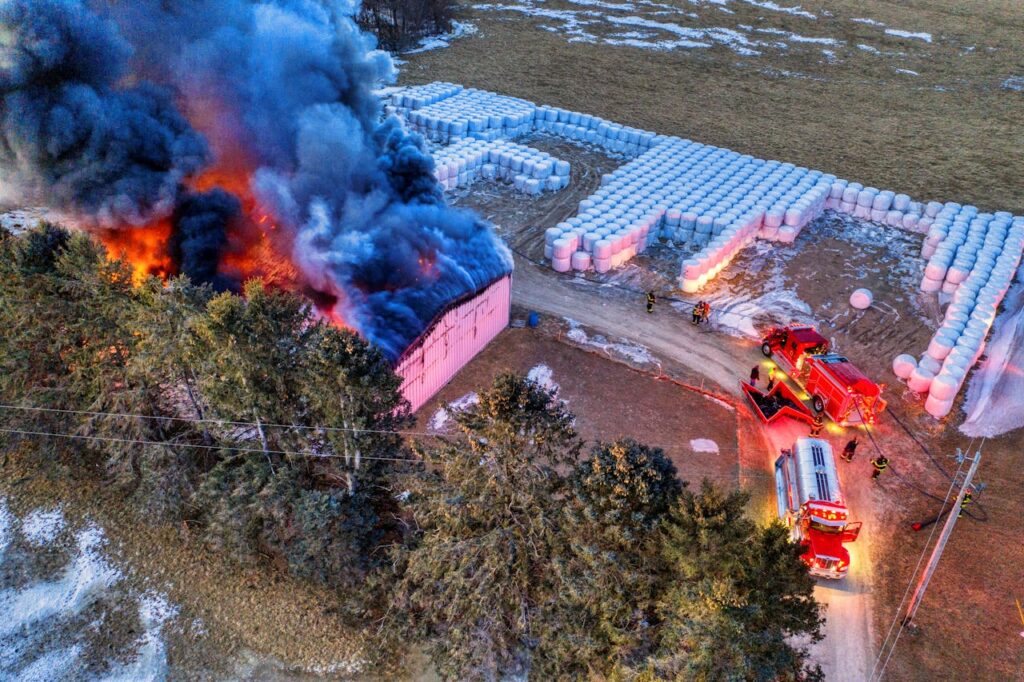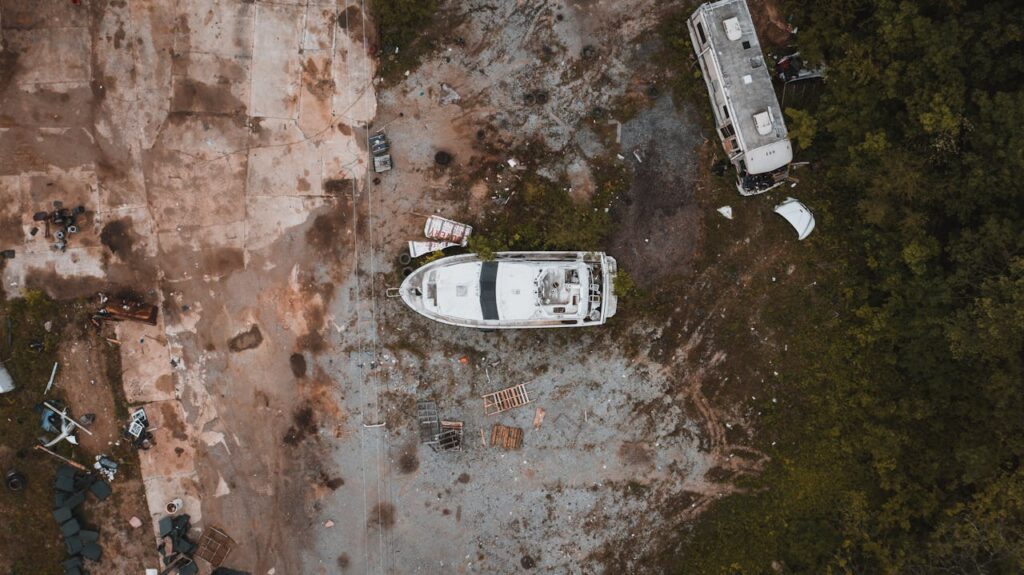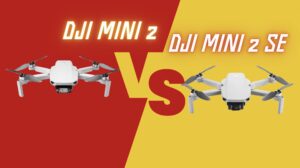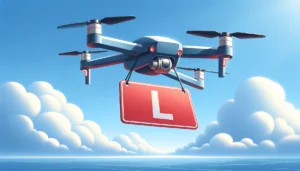Introduction: Mastering Drone Insurance in the UK
Navigating the complexities of drone insurance in the UK is an essential step for every drone operator, whether you’re flying for pleasure or conducting commercial operations. With the increasing popularity of drones for a wide range of applications, understanding how to secure the right insurance coverage is more important than ever. This comprehensive guide is designed to demystify the process, providing you with the insights needed to make informed decisions about your drone insurance. From coverage types and policy exclusions to the importance of customer support and the value of user reviews, we’ll cover everything you need to know to protect your aerial endeavors. Whether you’re a seasoned pilot or new to the drone scene, this article will equip you with the knowledge to choose the best insurance policy for your needs, ensuring you’re fully covered for every flight across the UK skies.
Table of Contents
Coverage Types in Drone Insurance Under CAA UK Law
In the United Kingdom, the Civil Aviation Authority (CAA) sets forth regulations that govern the use of unmanned aerial vehicles (UAVs), commonly known as drones. For drone operators, whether flying for leisure or commercial purposes, understanding the types of coverage available in drone insurance is crucial to comply with CAA regulations and ensure adequate protection. This section details the essential coverage types under CAA UK law, emphasizing the importance of aligning your drone insurance with these legal requirements.
1. Public Liability Insurance: This is perhaps the most crucial type of drone insurance in the UK, as it covers legal liabilities for injury or damage to third parties. The CAA mandates that commercial drone operators have adequate public liability insurance in place. This coverage is vital for protecting against claims that can arise from drone operations affecting bystanders or property.

2. Hull Insurance: While not legally required by the CAA, hull insurance is highly recommended as it covers the drone itself against loss or damage. Given the investment in drone technology, ensuring you have hull coverage is a smart financial decision.

3. Equipment Insurance: Separate from hull insurance, equipment insurance covers the loss or damage of ancillary items such as cameras, sensors, and other payloads attached to the drone. This type of coverage is essential for commercial operators who rely on specialised equipment for their operations.
4. In-Flight Insurance: This covers the drone and its equipment while the UAV is airborne. The risks during flight are significantly higher, making this coverage critical for all drone operators. In-flight insurance ensures you’re protected from the moment your drone leaves the ground until it safely returns.
5. Personal Accident Insurance: For commercial drone operators, personal accident insurance provides coverage for the pilot in the event of an injury while operating the drone. This insurance can offer peace of mind by covering medical costs or lost income due to accidents.
Compliance with CAA Regulations: It’s essential to note that while the CAA mandates public liability insurance for commercial operations, choosing comprehensive coverage that includes hull, equipment, in-flight, and personal accident insurance is prudent. This holistic approach ensures that all aspects of your drone operations are protected, aligning with the best practices and legal requirements set by the CAA.
In conclusion, understanding and obtaining the right types of drone insurance coverage is paramount for UK drone operators to comply with CAA regulations and safeguard their operations. Whether you’re flying drones for fun or profit, ensuring you have adequate protection against the myriad of risks associated with drone flying will enable you to operate with confidence and security.
Regulation (EC) No 785/2004 of the European Parliament and of the Council of 21 April 2004 is a crucial piece of legislation for those operating or involved with air carriers and aircraft operators, including drone operators within the EU and, by extension, has implications for UK drone operators as well. This regulation outlines the insurance requirements for air carriers and aircraft operators, ensuring they have adequate insurance covering passengers, baggage, cargo, and third parties.
Key Points of EC 785/2004 for Drone Operators:
- Minimum Insurance Levels: The regulation specifies minimum insurance levels based on the Maximum Takeoff Mass (MTOM) of the aircraft, which includes drones. These levels are intended to ensure adequate coverage for liabilities in case of accidents.
- Liability Coverage: It mandates insurance coverage for passengers, baggage, cargo, and third parties. While drones may not carry passengers or cargo like traditional aircraft, the requirement for third-party liability insurance is particularly relevant, covering potential damages to persons or property.
- Validity of Insurance: The regulation requires that the insurance coverage be valid for the entire period during which the aircraft is used or parked within an EU Member State, which underscores the need for continuous coverage.
- Compliance for Non-EU Operators: Non-EU operators, including those from the UK post-Brexit, must demonstrate compliance with these insurance requirements when operating within the EU. This aspect is crucial for UK-based drone operators conducting activities in EU countries.
- Special Drawing Rights (SDRs): The regulation uses Special Drawing Rights (SDRs) as a unit of account to define minimum insurance requirements. SDRs are an international type of monetary reserve currency created by the International Monetary Fund (IMF) that operates as a supplement to the existing reserves of member countries.
For UK drone operators, especially those flying or planning to fly within the EU, understanding and adhering to the requirements of EC 785/2004 is essential. Ensuring that your drone insurance policy meets these standards not only keeps you compliant with European regulations but also reinforces the safety and liability preparedness of your operations.
Given the dynamic nature of drone legislation and the evolving relationship between the UK and the EU, staying informed about updates to regulations like EC 785/2004 and how they apply within the UK context is advisable for all drone operators.
Coverage Limits in Drone Insurance for UK Operators
For drone operators in the UK, understanding coverage limits within your drone insurance policy is fundamental to ensuring that you’re adequately protected, while also complying with Civil Aviation Authority (CAA) guidelines. Coverage limits refer to the maximum amount an insurance provider will pay out in the event of a claim. Here, we’ll explore the critical aspects of setting and understanding these limits within the context of UK drone operations.
1. Public Liability Insurance Limits: In the UK, public liability insurance is essential, especially for commercial drone operators. The CAA doesn’t specify exact coverage limits, but it’s commonly recommended to have a minimum of £1 million in coverage. For larger operations or those involving overflight of populated areas, significantly higher limits may be required to ensure comprehensive protection against potential claims.

2. Hull Coverage Limits: This limit should reflect the value of your drone. Given the range of drones from consumer to high-end commercial UAVs, accurate valuation is key. Ensure your policy covers the full replacement cost of your drone to avoid underinsurance, which could leave you with unexpected out-of-pocket expenses in case of damage or loss.
3. Equipment Coverage Limits: Similar to hull insurance, the limits for any onboard equipment—such as cameras, sensors, and other payloads—should match their current market value. This ensures that you can replace or repair your equipment without financial strain if it gets damaged alongside your drone.
4. Adjusting Your Coverage Limits: It’s crucial for drone operators to regularly review and, if necessary, adjust their insurance coverage limits. This is especially important as you acquire more expensive drones, expand your operations, or engage in activities that carry a higher risk. Keeping your coverage limits aligned with your current needs ensures you remain fully protected at all times.
5. Understanding CAA Requirements: While the CAA mandates that commercial drone operators in the UK must have public liability insurance, the authority doesn’t prescribe specific coverage limits. Operators must assess their own risk and choose limits that reflect the scale and nature of their drone activities. Consulting with an insurance specialist familiar with drone operations can provide valuable insights into selecting appropriate coverage limits.
In conclusion, setting the right coverage limits in your drone insurance policy is a critical aspect of operating drones in the UK. It not only ensures compliance with CAA regulations but also provides peace of mind, knowing you’re protected against potential financial losses. Regularly reviewing and adjusting these limits in line with the value of your equipment and the nature of your operations is essential for maintaining adequate coverage as your drone activities evolve.
Deductibles in UK Drone Insurance
In the realm of drone insurance within the UK, understanding the concept of deductibles is pivotal for drone operators. A deductible, often referred to as an excess in UK insurance policies, is the amount you, the policyholder, are required to pay out-of-pocket before your insurance coverage kicks in to cover the remainder of a claim. This fundamental aspect of your drone insurance policy affects both your premium costs and your financial responsibility in the event of a claim. Here’s a breakdown of how deductibles work in the context of drone insurance in the UK, tailored to be informative and straightforward.
1. Role of Deductibles in Drone Insurance: Deductibles are used by insurance companies to share risk with the policyholder. By choosing a policy with a deductible, you agree to cover a small portion of the loss, which in turn, often lowers your premium costs. It’s a balance between immediate savings on premiums and potential out-of-pocket costs in case of a claim.

2. Choosing the Right Deductible: The key is to select a deductible amount that you’re comfortable paying in the event of an accident or loss. Higher deductibles generally result in lower premiums, but it means higher out-of-pocket costs when making a claim. Conversely, a lower deductible increases the premium but reduces the financial burden if a claim needs to be filed.
3. Deductibles for Different Coverage Types: It’s important to note that deductibles might vary within your drone insurance policy based on the type of coverage. For example, the deductible for hull coverage (covering damage to the drone itself) might differ from the deductible applied to liability coverage (covering damage or injury to third parties).
4. Impact on Claims Process: Understanding how your deductible influences the claims process is crucial. In the event of a claim, you’ll need to pay the deductible amount directly, often to the repair service or as a part of the settlement process. Only after the deductible has been paid will the insurance coverage take effect to cover the remaining costs associated with the claim.
5. Annual Review and Adjustment: Your insurance needs and financial situation can change over time. Regularly reviewing and, if necessary, adjusting your deductible is wise to ensure it still fits your circumstances. For instance, as you become more experienced and your risk of incidents decreases, you might opt for a higher deductible to save on premiums.
In conclusion, deductibles are a vital component of drone insurance policies in the UK, influencing both the cost of your premiums and your level of financial responsibility in the event of a claim. By carefully considering your deductible amount in relation to your financial situation and risk tolerance, you can tailor your drone insurance policy to fit your specific needs, ensuring you’re adequately protected while managing costs effectively.
Premium Costs of Drone Insurance in the UK
Navigating the costs associated with drone insurance in the UK is crucial for both recreational and commercial drone operators. The premium cost is essentially the price you pay for your drone insurance coverage, which can vary significantly based on several factors. Understanding these factors can help you make informed decisions about your insurance policy, ensuring you get the coverage you need at the best possible price. Let’s delve into what influences premium costs and how you can manage them effectively.
1. Type of Drone Operations: The nature of your drone activities plays a significant role in determining your insurance premium costs. Commercial operations often face higher premiums due to the increased risks associated with commercial use, including the potential for third-party liability claims. Recreational users might enjoy lower premiums, reflecting the lower risk profile of hobbyist flying.
2. Coverage Options: The scope and limits of your coverage directly impact your premium costs. Opting for comprehensive coverage, including public liability, hull damage, and equipment insurance, will generally result in higher premiums. However, selecting higher deductibles can help offset some of these costs.
3. Drone and Equipment Value: The value of your drone and any attached equipment will influence your insurance premiums. Higher-value drones equipped with expensive cameras or sensors typically incur higher premiums due to the increased cost to repair or replace them in the event of a claim.

4. Pilot Experience and Qualifications: Insurance providers often consider the experience and qualifications of the drone pilot when determining premium costs. Pilots with formal training, certifications, and a clean flying record may benefit from reduced premiums, as they represent a lower risk to insurers.
5. Operating Locations: The areas where you plan to fly your drone can also affect premium costs. Flying in congested areas or near sensitive locations like airports can increase the risk of incidents, potentially leading to higher premiums. Conversely, operating in low-risk areas with fewer obstacles and hazards can help reduce costs.
Managing Premium Costs: Understanding these factors is the first step toward managing your drone insurance premium costs effectively. Comparing quotes from multiple insurers, adjusting your coverage levels, and regularly reviewing your policy as your needs change can help ensure you’re getting the best value for your coverage.
In conclusion, premium costs for drone insurance in the UK are influenced by a variety of factors, from the type of drone operations and the value of your equipment to your experience as a pilot. By carefully considering these factors and making informed choices about your insurance coverage, you can secure the protection you need at a cost that fits your budget.
Policy Exclusions in UK Drone Insurance
When navigating the complexities of drone insurance in the UK, it’s essential to understand not just what is covered but also what isn’t. Policy exclusions play a critical role in shaping the scope of your coverage, delineating the specific scenarios, actions, or damages that your drone insurance policy does not cover. Being well-informed about these exclusions can help you avoid unexpected surprises in the event of a claim. Here’s a clear and concise overview of common policy exclusions in UK drone insurance, designed to keep you informed and prepared.
1. Intentional Damage or Misconduct: Most drone insurance policies exclude coverage for damages or losses resulting from intentional misconduct or illegal activities. This includes scenarios where damage is caused on purpose, through negligence, or by engaging in prohibited operations as defined by the CAA.

2. Wear and Tear: Normal wear and tear or mechanical failure over time is typically not covered by drone insurance policies. Insurance is designed to protect against sudden and unexpected events, not gradual deterioration or maintenance issues.
3. Operating Outside Approved Areas: If you operate your drone outside of the geographical limits approved by the CAA or your insurance policy (such as flying in restricted airspace), any resulting damages or liabilities may not be covered.
4. Unauthorized Operators: Many policies specify that the drone must be operated by the insured individual or other authorized operators. Claims resulting from someone outside of these parameters operating the drone may be excluded.
5. Competition and Racing: Participation in drone racing or competitive events often falls under exclusions, as these activities carry a higher risk of damage or loss.
6. Breach of Regulations: Violating CAA regulations or failing to adhere to legal requirements for drone operation can lead to exclusions in coverage. This includes flying without proper registration, exceeding altitude limits, or endangering public safety.
Understanding policy exclusions is key to ensuring that you’re adequately protected when operating your drone. By familiarizing yourself with these limitations, you can take proactive steps to mitigate risks and align your drone usage with the parameters of your insurance coverage. Remember, knowledge of what your drone insurance policy does not cover is just as important as understanding what it does cover, ensuring that you navigate the UK’s skies informed and assured.
Eligibility Requirements for UK Drone Insurance
In the UK, ensuring your drone activities are covered by insurance not only protects you financially but also aligns with Civil Aviation Authority (CAA) regulations, particularly for commercial operators. Understanding the eligibility requirements for drone insurance is crucial for securing the right coverage. These requirements can vary across insurance providers, but there are common criteria that most insurers consider. Here’s a straightforward overview of these requirements, designed to help UK drone operators navigate their insurance options effectively.
1. Registration and Compliance: The CAA mandates that drones weighing over 250 grams be registered, and operators must pass an online theory test to get a flyer ID. Insurance providers typically require proof of compliance with these regulations as a basic eligibility criterion.
2. Qualifications for Commercial Operators: For those looking to use drones for commercial purposes, additional qualifications may be required. This often includes obtaining an Operational Authorization from the CAA, which requires a more detailed assessment of your operations.
3. Drone Specifications: Some insurance policies may have specific eligibility criteria based on the drone’s specifications, such as its weight, type, or the technology it employs. High-risk features, like experimental technology, may affect eligibility or premium costs.
4. Operating Area: Insurance coverage might be restricted based on where you intend to fly your drone. For instance, flying in densely populated areas or near airports might have different eligibility requirements or necessitate additional coverage.
5. Safety Records: Insurers may inquire about your flying history, including any accidents or violations of drone regulations. A clean safety record can positively impact your eligibility and the cost of your insurance.
6. Intended Use: The purpose behind your drone usage, whether for recreational photography, commercial surveying, or agricultural monitoring, can influence eligibility. Insurers tailor policies to the risk associated with specific uses.
Understanding and meeting these eligibility requirements is the first step toward securing comprehensive drone insurance in the UK. Whether you’re flying for fun or profit, ensure your operations are compliant, safe, and aligned with the specific criteria set by your chosen insurance provider. This proactive approach not only facilitates the insurance application process but also enhances your protection against the inherent risks of drone operation.
Claims Process for UK Drone Insurance
Navigating the claims process for drone insurance in the UK can seem daunting, especially after experiencing an incident with your drone. However, understanding this process can significantly ease the experience, ensuring you’re prepared to handle any mishaps efficiently. Here’s a concise guide to the claims process, tailored for UK drone operators, with the aim of making the procedure as straightforward as possible.
1. Immediate Action Post-Incident: If you’re involved in an incident with your drone, such as a collision or a loss, the first step is to ensure everyone’s safety and then report the incident to the appropriate authorities if necessary. Documentation is key; take photos or videos of the scene and the damage for evidence.

2. Contacting Your Insurer: Promptly inform your insurance provider about the incident. Most insurers have a specified period within which you must report any incidents to remain eligible for coverage. They will provide you with a claim form to fill out.
3. Completing the Claim Form: Fill in the claim form with all required details, including the circumstances of the incident, any third-party involvement, and the extent of the damage. Accuracy and thoroughness are crucial to avoid delays in the claims process.
4. Documentation and Evidence Submission: Along with the claim form, submit all gathered evidence, including photos, videos, and any witness statements. Also, provide any requested additional documentation, such as purchase receipts or previous repair records for your drone.
5. Claims Assessment: After submitting your claim, the insurance company will assess the evidence, which may include an investigation into the incident. This process determines the validity of your claim and the extent of the insurer’s liability.
6. Resolution and Compensation: Once your claim is assessed, the insurer will inform you of the outcome. If approved, they will proceed with compensation based on your coverage limits and the nature of the claim. This might involve repairing your drone, replacing it, or providing financial compensation.
7. Feedback and Follow-Up: Some insurers may offer feedback or advice on how to prevent future incidents. It’s also an opportunity for you to provide feedback on the claims process, which can be beneficial for both parties moving forward.
In conclusion, while the prospect of navigating a drone insurance claim in the UK might seem complex, being prepared and understanding the process can make it much more manageable. By following these steps and ensuring you have all necessary documentation and evidence in order, you can expedite the claims process and return to flying your drone with peace of mind.
Customer Support in UK Drone Insurance
For drone enthusiasts and professionals alike in the UK, accessing reliable customer support from their drone insurance provider is as crucial as the coverage itself. Exceptional customer support can significantly enhance your insurance experience, offering guidance when choosing policies, assistance during claims, and answers to your queries. Here’s an informative look at what constitutes outstanding customer support in the realm of UK drone insurance.
1. Availability: Top-notch customer support means being able to get in touch with your insurer when you need them. This includes extended hours of operation beyond the traditional 9-5, weekend availability, and multiple channels of communication such as phone, email, live chat, and social media.
2. Responsiveness: When you reach out with a question or concern, prompt responses are vital. Timely communication is especially crucial during the claims process or when you need urgent advice following an incident with your drone.
3. Expertise: Customer support representatives should have a deep understanding of drone insurance policies, coverage options, and the specific needs of drone operators. This expertise ensures that you receive accurate information and guidance tailored to your situation.
4. Problem-Solving Ability: Effective customer support means not just answering questions but solving problems. Whether it’s navigating policy adjustments, understanding coverage details, or facilitating the claims process, the support team should actively work to resolve your issues.
5. Support Resources: In addition to direct support, the best drone insurance providers offer a wealth of online resources. This might include FAQs, guides on understanding drone insurance in the UK, tips for safe drone operation, and tutorials for submitting claims online.
6. Customer Feedback Mechanism: A customer-centric insurance provider values feedback, using it to continually improve their services. Look for companies that actively seek your input on their support experience and demonstrate a commitment to making improvements based on customer suggestions.
In conclusion, excellent customer support is a cornerstone of any good drone insurance policy in the UK. It not only enhances your overall experience but also provides peace of mind, knowing that you have a knowledgeable and responsive team ready to assist you whenever you need. When selecting a drone insurance provider, consider the quality of their customer support as a key factor in your decision, ensuring they meet the high standards necessary to support your drone flying activities.
Customization Options in UK Drone Insurance
In the dynamic world of drone flying in the UK, having an insurance policy that can be tailored to your specific needs is not just a benefit—it’s essential. Customization options in drone insurance allow operators, from hobbyists to commercial users, to adjust their coverage according to the unique risks and requirements of their drone activities. This adaptability ensures you’re neither underinsured nor overpaying for unnecessary coverage. Let’s explore the key customization options available in UK drone insurance, presented in an informative and straightforward manner.
1. Adjustable Coverage Limits: One of the most critical customization options is the ability to set your coverage limits. This flexibility allows you to increase or decrease the amount of protection based on the value of your drone and the potential liabilities associated with its use.

2. Selection of Covered Risks: UK drone insurance policies can often be customized to cover specific risks. For example, you might choose to add or omit coverage for certain scenarios such as accidental damage, theft, or loss during transit. Tailoring your policy to the risks most relevant to your drone operations can optimize your insurance costs.
3. Optional Extras: Many insurers offer additional coverage options that can be added to your policy for an extra fee. These might include public liability cover beyond the minimum required, in-flight insurance for commercial payloads, or coverage for drone racing events.
4. Geographical Coverage Adjustments: Depending on where you plan to fly your drone, you may need to customize the geographical limits of your insurance. Some policies allow for international coverage, which is particularly important for drone operators who travel abroad for work or competitions.
5. Deductible Levels: The option to adjust your deductible (the amount you pay out of pocket in the event of a claim) can significantly affect your premium. A higher deductible generally lowers your premium cost, while a lower deductible can increase it but offers less out-of-pocket expense if a claim is made.
6. Policy Duration Flexibility: Some drone operators may prefer short-term coverage for specific events or projects, while others might need annual policies. The ability to customize the duration of your insurance policy ensures you’re only paying for coverage when you need it.
Customization options in UK drone insurance policies offer the flexibility to tailor coverage precisely to your operational needs and risk profile. By understanding and utilizing these options, you can ensure that your drone insurance not only meets CAA regulations but also provides optimal protection and value for your specific situation.
Discounts and Rewards in UK Drone Insurance
In the evolving landscape of UK drone insurance, providers are increasingly recognizing the value of incentivizing safe and responsible drone operation. Discounts and rewards can significantly reduce your premiums while encouraging best practices in drone usage. Understanding these benefits can help you save money and enhance your flying experience. Here’s a straightforward guide to the types of discounts and rewards commonly available in UK drone insurance policies.
1. No-Claim Discounts: Many insurers offer discounts to policyholders who have not made any claims over a certain period. This reward for safe flying can lead to substantial savings on your premiums, emphasizing the financial benefits of cautious drone operation.

2. Membership Discounts: Being a member of certain drone clubs or associations, like the British Model Flying Association (BMFA) or the Association of Remotely Piloted Aircraft Systems UK (ARPAS-UK), might qualify you for insurance discounts. These organizations often negotiate deals with insurance providers on behalf of their members.
3. Training and Certification Rewards: Completing accredited drone piloting courses or obtaining additional qualifications can not only improve your flying skills but also lower your insurance costs. Insurers value the reduced risk presented by well-trained operators and often reflect this in their pricing.
4. Advanced Safety Equipment: Utilizing advanced safety features or equipment on your drone, such as geo-fencing capabilities, automatic return-to-home functions, or collision avoidance systems, can also lead to insurance discounts. These technologies reduce the risk of accidents, making your policy less costly for the insurer.
5. Volume Discounts for Multiple Drones: Operators who insure more than one drone with the same provider may be eligible for volume discounts. This is particularly relevant for commercial operators with multiple UAVs in their fleet.
6. Loyalty Rewards: Long-term customers may receive loyalty rewards or discounts as an acknowledgment of their ongoing relationship with an insurer. These rewards often come in the form of reduced premiums or additional coverage benefits.
By taking advantage of discounts and rewards, UK drone operators can enjoy more affordable insurance while being motivated to follow best practices in drone safety and operation. Whether through no-claim discounts, association memberships, training, or the use of advanced technology, there are multiple ways to reduce your premiums without compromising on coverage. Always inquire with your insurer about available discounts to ensure you’re maximizing your savings and benefits.
Geographical Coverage in UK Drone Insurance
For drone enthusiasts and professionals operating within the UK, understanding the geographical coverage offered by your drone insurance policy is paramount. Geographical coverage determines where in the world your insurance protection is valid, directly impacting your ability to fly and operate your drone legally and safely across different territories. This aspect of drone insurance is especially crucial for those who travel or undertake commercial operations in various locations. Let’s delve into what you need to know about geographical coverage in UK drone insurance, presented in an accessible and informative manner.
1. UK Coverage: Most drone insurance policies in the UK naturally provide comprehensive coverage within the country. This includes England, Scotland, Wales, and Northern Ireland. It’s essential to confirm that your policy covers all regions of the UK, especially if you plan to operate your drone across national borders within the UK.

2. European and Worldwide Extensions: If you plan to use your drone outside the UK, look for policies that offer European or worldwide geographical coverage. This extension is vital for those who travel abroad for leisure or conduct international commercial drone operations. Be sure to check for any territorial limits or excluded countries in your policy.
3. Restrictions and Regulations: It’s important to note that flying your drone in certain areas, regardless of insurance coverage, may be subject to local regulations and restrictions. Always research and comply with the drone flying laws of the country you’re operating in. Insurance does not override legal restrictions.
4. Coverage While in Transit: For those who travel with their drones, ensuring your policy covers the drone while in transit (e.g., during flights, in cars, or while being shipped) is crucial. This part of geographical coverage protects your drone from damage or loss as you move between locations.
5. Temporary vs. Permanent Moves: Some policies differentiate between temporary travel with your drone and relocating permanently to a new country. Clarify with your insurer how a long-term move might affect your geographical coverage and whether policy adjustments are necessary.
Understanding the geographical coverage of your UK drone insurance ensures that you’re always flying within the bounds of your policy, whether you’re soaring above the British countryside or navigating the skies of distant lands. Before embarking on international drone adventures, thoroughly review your policy’s territorial limits and consider any additional coverage needed to keep your drone activities safe and compliant worldwide. This proactive approach allows you to focus on enjoying your drone flying experiences, secure in the knowledge that your insurance meets your geographical needs.
Commercial vs. Recreational Use in UK Drone Insurance
In the UK, drone insurance is a critical aspect of flying, whether you’re piloting your UAV (Unmanned Aerial Vehicle) for fun or for profit. However, the distinction between commercial and recreational use significantly influences the type of insurance coverage you’ll need. Understanding these differences ensures that your drone operations are both legal and adequately protected under the right policy. This concise guide will clarify the insurance implications for commercial vs. recreational drone use in the UK, presented in an easy-to-understand format.
1. Recreational Use: Recreational drone flying encompasses operations done purely for enjoyment and personal interest, without any financial gain or business purposes. For hobbyists, the primary insurance concern is typically public liability coverage, which protects against claims for damage or injury caused by your drone.
2. Commercial Use: Commercial drone operations involve using a drone for business purposes, including aerial photography, land surveying, agricultural monitoring, and more. Commercial pilots often require more comprehensive insurance coverage, including public liability, hull insurance, and coverage for payloads. Additionally, commercial operators in the UK must comply with specific CAA regulations and may need to obtain an Operational Authorization.

3. Insurance Policy Differences:
- Liability Limits: Commercial drone insurance policies typically offer higher liability limits compared to recreational policies, reflecting the increased risks and potential financial implications of commercial operations.
- Coverage Scope: Commercial policies often include additional coverage options tailored to business needs, such as loss of income, equipment insurance, and coverage for hired or non-owned drones.
- Regulatory Compliance: For commercial operators, insurance policies must align with CAA regulatory requirements, including the need for evidence of insurance to obtain Operational Authorization.
4. Adjusting Coverage Based on Use: It’s important for drone operators to accurately define the purpose of their drone use when applying for insurance. Misrepresenting commercial drone activities as recreational to save on insurance costs can lead to denied claims and potential legal issues. Conversely, recreational flyers should not overpay for unnecessary commercial coverage.
In conclusion, whether you fly drones for pleasure or for work in the UK, selecting the correct insurance policy is essential to protect yourself against potential liabilities and to comply with legal requirements. By understanding the distinctions between commercial and recreational use, you can ensure that your drone flying is both safe and compliant, with insurance coverage that meets your specific needs. Always consult with your insurance provider to confirm that your policy aligns with your drone activities, providing you with the appropriate level of protection.
Policy Renewal and Cancellation in UK Drone Insurance
Understanding the ins and outs of policy renewal and cancellation is a crucial aspect of managing your drone insurance in the UK. Whether you’re flying drones for recreational purposes or operating them commercially, being informed about how to renew or cancel your insurance policy ensures that you maintain continuous coverage and understand the financial implications of any changes you make. This guide will provide clear insights into the policy renewal and cancellation process, tailored for UK drone operators.
1. Policy Renewal: Drone insurance policies are typically issued on an annual basis, requiring renewal at the end of each policy period to maintain coverage. Prior to the expiration date, your insurer will usually contact you with a renewal offer, which may include updates to the policy terms or changes in the premium based on your flying history and any changes in risk.

2. Reviewing Your Coverage Needs: The renewal period is an opportune time to assess your current insurance coverage against your needs. Consider any changes in your drone activities, such as an increase in commercial operations or the acquisition of new equipment, which might necessitate adjustments to your coverage.
3. Automatic Renewal Policies: Some drone insurance policies feature automatic renewal clauses, meaning the policy will renew for another term unless you notify the insurer that you wish to cancel or make changes. It’s essential to understand your policy’s terms regarding automatic renewal to avoid unexpected charges.
4. Cancellation Process: If you decide to cancel your drone insurance policy, either because you no longer need coverage or you wish to switch providers, it’s important to follow the insurer’s cancellation process. This typically involves notifying your insurer in writing within a specified period. Be aware of any cancellation fees or charges and whether you’re entitled to a refund of any prepaid premium.
5. Early Cancellation and Refunds: Cancelling your policy before the end of its term might result in different financial implications depending on your insurer’s policies. Some insurers offer a pro-rata refund for the unused portion of the premium, while others may charge a cancellation fee or offer no refund at all.
6. Continuous Coverage Consideration: Before cancelling your drone insurance, ensure you have arranged alternative coverage if you continue to fly your drone. A lapse in coverage could expose you to significant financial risk in the event of an accident or liability claim.
In summary, managing the renewal and cancellation of your UK drone insurance policy requires attention to detail and an understanding of your current and future coverage needs. By proactively engaging with the renewal process and being informed about the implications of cancellation, you can ensure that your drone operations remain protected under the most suitable and cost-effective insurance policy.
Additional Benefits in UK Drone Insurance
When exploring drone insurance options in the UK, it’s important to look beyond the basic coverage elements and consider the additional benefits that insurers may offer. These perks can enhance the value of your policy, providing not just financial protection but also support services that make your drone operation smoother and more secure. Let’s delve into some of the key additional benefits that can come with UK drone insurance policies, presented in an easy-to-understand manner.
1. Legal Assistance: Some drone insurance policies include access to legal assistance or advice, which can be invaluable in the event of a dispute or if you’re facing regulatory challenges. This benefit can help you navigate complex legal situations related to your drone use, from privacy complaints to copyright issues.
2. Drone Recovery Services: Losing a drone, especially in hard-to-reach areas, can be a significant setback. Certain insurers offer drone recovery services as part of their policy benefits, assisting in the search and safe retrieval of your lost equipment.
3. Training and Education Discounts: To encourage safe flying practices, some insurance providers partner with training organizations to offer discounts on courses for drone piloting, safety, and regulatory compliance. These educational benefits not only improve your flying skills but can also lead to reduced insurance premiums.

4. Equipment Upgrades and Discounts: Recognizing the rapid technological advancement in drones, certain policies may offer benefits related to equipment upgrades or discounts on new purchases. This can help you keep your drone technology up to date at a lower cost.
5. No-Claims Bonuses: As a reward for safe flying and the absence of insurance claims, insurers might offer no-claims bonuses. This could manifest as a discount on your premium upon renewal, providing a financial incentive for maintaining a clean flying record.
6. Personal Accident Coverage: While not standard in all drone insurance policies, some may include personal accident coverage as an additional benefit. This provides financial support in case you’re injured while operating your drone, covering medical expenses or lost income.
By considering these additional benefits when choosing your UK drone insurance policy, you can ensure that you’re not only protected against financial loss but also supported in various aspects of your drone operation. From legal advice and recovery services to educational discounts and personal protection, these extra perks can significantly enhance the overall value of your insurance coverage, making your flying experience safer, more enjoyable, and potentially more cost-effective.
User Reviews and Ratings in UK Drone Insurance
In today’s digital age, user reviews and ratings have become invaluable resources for making informed decisions, especially when selecting a drone insurance policy in the UK. These firsthand accounts from fellow drone operators can offer insights into the quality of coverage, customer service, and overall satisfaction with an insurance provider. Understanding how to interpret and utilize user reviews and ratings can guide you to the best insurance choice for your needs. Here’s a guide on how to leverage user reviews and ratings effectively.
1. Finding Reliable Reviews: Start by visiting reputable insurance comparison sites, forums dedicated to drone enthusiasts, and social media groups. These platforms often feature user-generated reviews and ratings that can give you a glimpse into the experiences of other drone operators with specific insurance companies.
2. Assessing Coverage Quality: Pay attention to reviews that discuss the extent and quality of coverage. Look for comments on how well the insurance policy meets the specific needs of different types of drone operations, such as recreational flying or commercial use.
3. Customer Service Experience: Reviews often highlight the insurer’s customer service quality, including responsiveness, helpfulness, and the ease of the claims process. Positive or negative experiences in this area can significantly impact your satisfaction with an insurance provider.
4. Comparing Prices and Value: User reviews can also shed light on the cost-effectiveness of different drone insurance policies. Look for comments comparing the price of the insurance to the benefits and coverage offered, as this can help you determine which policies offer the best value for money.

5. Real-World Claims Process: One of the most valuable insights from user reviews is the accounts of the claims process. Reviews that detail the ease or difficulty of filing a claim, the speed of response, and the outcome of the claim can be particularly revealing.
6. Overall Satisfaction and Recommendations: Finally, consider the overall satisfaction expressed in the reviews and whether users would recommend the insurance provider to others. High recommendation rates and repeat customers are strong indicators of a reputable and reliable insurer.
In conclusion, user reviews and ratings are powerful tools for evaluating UK drone insurance options. They offer real-world insights that can complement your research, helping you choose a policy that provides the right coverage, excellent customer service, and good value for money. By carefully considering the experiences of other drone operators, you can make a more informed decision that aligns with your specific insurance needs and expectations.
Conclusion: Navigating Your UK Drone Insurance Options
Selecting the right drone insurance in the UK is a crucial step for both recreational and commercial drone operators. It not only ensures compliance with regulations but also provides peace of mind, knowing that you’re protected against potential financial losses and liabilities. Throughout this guide, we’ve explored various critical aspects of drone insurance, from understanding different coverage types and policy exclusions to evaluating additional benefits and leveraging user reviews and ratings.
Key Takeaways:
- Customize Your Coverage: Tailor your insurance policy to match your specific drone use, whether commercial or recreational, to ensure you’re neither underinsured nor overpaying for unnecessary coverage.
- Understand Policy Details: Pay close attention to policy exclusions, geographical coverage, and the claims process to avoid surprises when you need to rely on your insurance.
- Value Customer Support: Consider insurers that offer exceptional customer service, which can be a lifeline in navigating claims or addressing concerns.
- Seek Out Additional Benefits: Look for policies that offer more than just basic coverage, such as legal assistance, drone recovery services, and training discounts, to maximize the value of your insurance.
- Use Reviews Wisely: Utilize user reviews and ratings to gauge the insurer’s reliability, customer satisfaction, and the real-world application of their policies.
Choosing the right drone insurance provider and policy requires careful consideration and research. By focusing on the aspects covered in this guide, you can make an informed decision that aligns with your operational needs, budget, and risk profile. Remember, the goal is to find a policy that not only meets the minimum legal requirements but also supports your drone activities with comprehensive protection and support.
In the rapidly evolving drone landscape, staying informed and adaptable with your insurance choices will help you navigate potential challenges and enjoy a rewarding flying experience. Whether you’re capturing breathtaking aerial photography, inspecting infrastructure, or simply enjoying the hobby, the right drone insurance is your safety net, allowing you to focus on achieving your objectives with confidence.
As the drone industry continues to grow and change, so too will the options and considerations for insurance. Keeping abreast of these changes and regularly reviewing your coverage will ensure that your drone operations are always protected, compliant, and ready to soar to new heights.





Pingback: The Ultimate Troublesome Showdown: DJI Mini 2 vs Mini 2 SE – Which Drone Wins? - Drone Gigs
Pingback: The Ultimate Guide to Holy Stone Drones: Features, Performance, and Value 2024 - Drone Gigs
Pingback: Unlocking the Sky: How to Secure Your Drone Licence in the UK and Understand International Norms 2024 - Drone Gigs
Pingback: Ensuring Safe Flights: The Ultimate Guide to Drone Safety and Regulations in the UK 2024 - anythingaerial.co.uk
Pingback: Revolutionising Surveillance: The Insider’s Guide to the Drone Security Business - Drone Gigs
Pingback: Why Chinese Drones are Dominating the Market in 2024: A Detailed Review - Drone Gigs